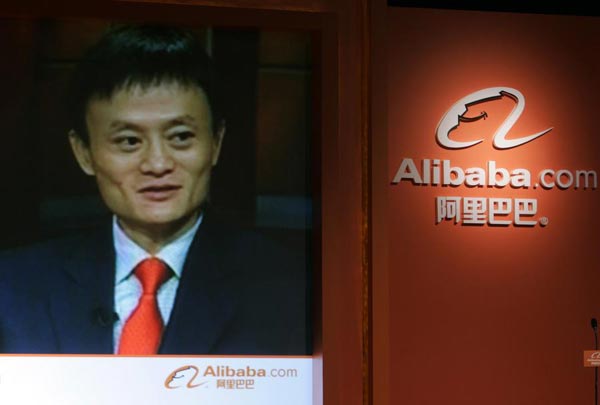–
Welcome to the desolate future of mall retailing in China.
–
 –
–
This seven-story skylit shopping mall occupies a premier spot in a high-rent commercial district in booming Shenzhen’s main shopping street, with a huge underground parking lot and entrances that link it directly with a busy Metro stop. And yet, everywhere you walk, floor after floor, retail shop fronts are boarded up, with most stores closed down. Only the ground floor supermarket, top floor Multiplex movie theater, basement chain restaurants and a large Starbucks are thriving. Thousands of square meters of retail space, fully rented as recently as twelve months ago at some of the highest commercial rents in the world, are silent and vacant. No customers, no tenants, no rent income.
Malls are starting to empty out in China, but Chinese are richer, and spending like never before. Overall, retail sales rose 13% in 2013. The paradox can be explained by a single word: Taobao. It is China’s largest online shopping business, and the anchor asset of Alibaba Group, now preparing for one of the world’s richest-ever IPOs on the US stock market. Taobao, along with its sister site TMall, and a host of smaller online retailers including Jingdong, Amazon China and Wal-Mart-controlled Yihaodian, have landed like an asteroid, and are wiping out the ecosystem supporting traditional retail in China, especially brand-name clothing shops.
The impact of online shopping in China is already far more wide-ranging than anything seen in the US or elsewhere. The reason is price. Taobao and others sell the same brand-name products available in shopping malls, but at prices often 30%-50% cheaper. More even than rising incomes, online shopping is the most powerful force in China for raising ordinary Chinese living standards and purchasing power.
Online shopping is everywhere in the world, at its heart, a price discovery tool. And Chinese are now discovering, in their hundreds of millions, they have been getting seriously ripped off by traditional stores, especially those selling foreign and domestic brand-name clothing and consumer electronics. They usually occupy 70% or more of a mall’s retail floor space.
Alibaba and other online merchants are joyously surfing a tidal wave of dissatisfaction with the high price of store shopping in China. Not only are brick-and-mortar stores’ prices much higher than buying online, they are also often more expensive, in dollar-terms, than the same or similar Made-in-China products sold at Wal-Mart or Target in the US.
Those two giant chains have fought back against online retailers in the US by using their buying power to offer brand name products at low prices. No retailer in China is really attempting this. Retailing in China is both fragmented and uncreative. As dynamic and innovative as China is in many industries, I’ve yet to see even one great home-grown retailing business here in China.
There’s also a big problem in the way Chinese shopping malls, especially high-end ones, are operated. Chinese mall owners are mainly a motley assortment of one-off developers who used government contacts to nab a valuable piece of commercially-zoned downtown land at a fraction of its market value. They then mortgaged the property, built a fancy shopping palace, and now take a cut of sales, along with a baseline rent. This revenue-sharing discourages retailers from cutting prices. If they do, they will fail to meet the landlord’s minimum monthly turnover figure.
Compounding the pressure on traditional retailers, mall owners often give the best ground-floor locations to global brands like Louis Vuitton or Prada, who pay little or no rent, but are meant to give the mall a high-class ambiance. The big luxury brands’ China outlets seem to have rather anemic sales, but use their China stores as a form of brand promotion richly subsidized by mall owners. Domestic brands are shunted to higher floors. Fewer shoppers venture up there, and so the stores will often end up failing.
The result, as in the photo above taken on a recent Sunday, floor after floor of vacant space. China is creating an entire new retail landscape – a glamorously-appointed mall in a nice part of town whose upper floors resemble downtown Detroit after a riot, with boarded-up shop fronts and scarcely a soul.
Anywhere else in the world, a mall with so much vacant space would either need to cut rents drastically or hand the property over to the banks that lent the money. Neither is happening. For now, the banks can often afford to be patient. Malls that have been around for a few years have probably already paid off the loan principal. Newer loans look far shakier. There are hundreds of bank-financed high-end malls now under construction or opening this year across China.
The stampede away from malls is only just beginning. Though China has already overtaken the US in dollar terms as largest online shopping market, there is every sign that the shift to buying online is accelerating and irreversible. Online sales in China should reach 10% of total retail sales this year, well above the US level of 6%. We project this percentage will rise to over 15% within the next decade. That’s because more Chinese will shop online, especially using their mobile phones, and because the range of items that are cheaper to buy online is so much larger in China than anywhere else.
For that, online merchants must also thank the country’s parcel delivery businesses, led by Shunfeng Express. They charge so little (about one-tenth the price of Fedex or UPS) and are so efficient in getting your parcel into your hands quickly that it makes economic sense not only to buy higher-priced apparel and consumer electronics, but also packaged food, soap, personal care items, even knickknacks that sell for less than $1.
The retail stores that remain in shopping malls are increasingly being used as free showrooms to facilitate sales by online competitors. Chinese shoppers go to stores to find what they like, try it on, check the price, then go home and buy direct from Taobao. That’s one reason malls are still drawing crowds.
Online shopping is not only cheaper, customer service is usually much better. Most merchants selling on Taobao manage and run their own online shops. Taobao is nothing more than an aggregation of millions of motivated individual entrepreneurs. They are available just about any time, day or night, by phone or online chat to answer questions, or even, when asked, offer an additional discount. They are, in my experience, smart, self-confident, friendly, competent.
Sales help in stores are often poorly-paid younger women who cling together behind the cash register. They clearly don’t much enjoy what they are doing, nor are they there to enhance the shopping experience. Often just the opposite.
So what’s going to happen to all the malls in China? There are over 2,500 across the country, already more than double the number of enclosed malls in the US. More are opening around China every week. Who will fill up all the space? There’s serious money to be made by investors or operators who can take advantage of the large disruptions now underway in traditional retailing.
Restaurants in malls are still doing well, and they don’t have anything to fear from Taobao. But, food outlets generally pay lower rent, per square foot, than retail stores and occupy either the top or basement floors. Premium office space is also still in demand in the downtown areas where many malls are located. Should malls be turned into food and entertainment centers? Or converted to commercial offices? Neither path looks easy.
The US went through a large wave of shopping mall bankruptcies in the 1990s, as large operators like DeBartolo and Campeau failed, and better ones like Simon Property Group and Westfield Group thrived. The good operators lowered costs, improved the economics and did well as newer retailers like Victoria’s Secret, Abercrombie & Fitch, Hollister, Juicy Couture, H&M, Apple, Papyruys, Teavana, Nordstrom honed retail formulas that could withstand online competition.
Retailers in China are in such peril because they charge too much, never innovate and do so little to win the loyalty of their customers. Alibaba and other online sellers are hastening them towards extinction.





















